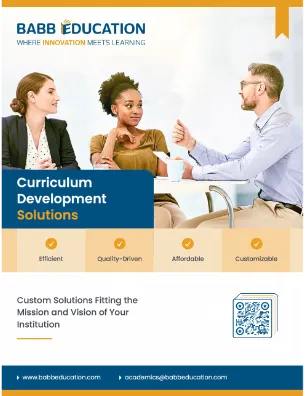Developing a curriculum that leads to high retention is a complex task that requires careful planning and consideration of various factors by administrators, instructional designers and faculty.
Developing a curriculum that leads to high retention is a complex task that requires careful planning and consideration of various factors by administrators, instructional designers and faculty. Here are some tips on how to develop a curriculum that leads to high retention that we use in our business:
- Start with clear learning objectives: I wrote about this as well in Instructional Design Basics for Online College Courses. The first step in developing a curriculum that leads to high retention is to clearly define your learning objectives. Students need to know what they are expected to learn, and what skills you want them to acquire.Make sure that your objectives are specific, measurable, achievable, relevant, and time-bound (SMART).
- Use active learning strategies: Active learning strategies, such as group discussions, problem-solving activities, and hands-on projects, have been shown to increase retention rates. These strategies help to engage students in the learning process and promote deeper understanding and long-term retention. The more students can connect the material they are learning with their existing and future real world, the more likely they are to persist in their course and program.
- Incorporate repetition and reinforcement: Repetition and reinforcement are important for long-term retention. To help students remember information, consider incorporating frequent review sessions, quizzes, and other activities that reinforce key concepts. More importantly, help them tie the work into their career goals!
- Provide timely feedback: Feedback is a crucial component of the learning process. Providing timely feedback to students helps them to identify areas where they need to improve and reinforces what they have learned and provides an opportunity to resolve them before the next assignment is due.
- Make the curriculum relevant: Students are more likely to retain information when they see its relevance to their lives and future goals. When developing your curriculum, make sure to include real-world examples and applications that are meaningful to your students. Using case studies that are years old provides foundational work but not necessarily current relevance.
- Use a variety of teaching methods: Using a variety of teaching methods can help to keep students engaged and promote retention. Consider incorporating lectures or seminars, office hours, discussions, hands-on activities, and multimedia resources to cater to different learning styles.
- Continuously evaluate and adjust: Finally, it's important to continuously evaluate and adjust your curriculum to ensure that it is meeting your learning objectives and promoting high retention rates. Use feedback from students, assessments, and other sources to make adjustments as needed. From simple textbook updates to adding in open education resources, refreshing courses is important.
By incorporating these strategies into your curriculum development process, you can increase the likelihood that your students will retain the information and skills they need to succeed. We use these in our practices and would love to partner with you!



